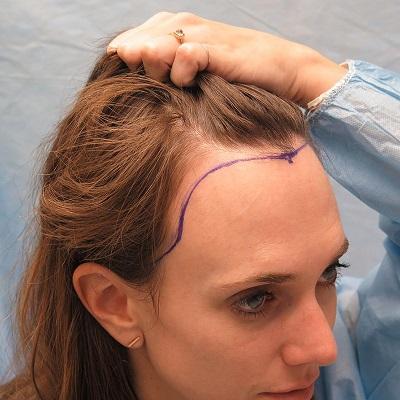Hair loss is a common issue affecting individuals of all ages, and hair transplants have become a popular solution for restoring hair. However, one of the most frequently asked questions is whether age plays a role in the success of a hair transplant. While there is no strict age limit for the procedure, factors such as hair loss stability, overall health, and donor hair quality can influence the outcome. In this blog, we will explore how age affects hair transplant in Islamabad results and the ideal age for undergoing the procedure.
Understanding Hair Transplantation
A hair transplant is a surgical procedure that involves extracting healthy hair follicles from a donor area (usually the back or sides of the head) and implanting them into thinning or bald areas. The two primary techniques used are:
-
Follicular Unit Extraction (FUE): Individual hair follicles are extracted and implanted, leaving minimal scarring.
-
Follicular Unit Transplantation (FUT): A strip of scalp is removed from the donor area, and individual follicles are transplanted.
While hair transplants offer long-term results, the success of the procedure depends on various factors, including age.
How Age Affects Hair Transplant Success
1. Hair Loss Stability
Age plays a crucial role in determining the stability of hair loss. Individuals under the age of 25 may still be experiencing progressive hair loss, making it challenging to predict future balding patterns. If a transplant is performed too early, surrounding natural hair may continue to thin, leading to an uneven appearance over time.
Conversely, individuals over 30 tend to have more stable hair loss patterns, making them better candidates for a successful and long-lasting hair transplant.
2. Donor Hair Availability
The quality and density of donor hair are critical factors in a successful transplant. Younger individuals often have stronger and healthier donor hair, but their ongoing hair loss may reduce available follicles for future procedures.
Older individuals may have weaker or thinner donor hair, which can affect the overall density and coverage after transplantation. However, if they maintain a good donor area, their age may not negatively impact the results.
3. Scalp Elasticity
As we age, the elasticity of the scalp decreases, which can make the hair transplant procedure more challenging. Reduced elasticity, particularly in older individuals, may impact how well the scalp heals after the procedure.
Younger individuals usually have better scalp elasticity, which can contribute to faster healing and improved graft survival.
4. Healing and Recovery Time
Healing and recovery are essential parts of a successful hair transplant. Younger patients tend to heal faster, with minimal scarring and quicker hair regrowth.
On the other hand, older patients may experience slower healing times due to reduced blood circulation and collagen production. However, proper post-operative care can significantly improve healing at any age.
5. Expectations and Goals
Younger individuals often have higher expectations regarding hair transplant results. They may desire higher density, which may not always be achievable in a single session. Older individuals, on the other hand, tend to have more realistic expectations and are often satisfied with moderate improvement.
Setting realistic goals based on age, hair loss pattern, and donor hair availability is crucial for achieving natural-looking results.
Ideal Age for a Hair Transplant
While there is no strict age requirement for a hair transplant, the best age range is typically 25 to 50 years old. Here’s why:
-
Under 25: Hair loss is often unstable, making it difficult to plan a long-term hair restoration strategy.
-
25 to 35: A great time for a hair transplant if hair loss has stabilized. Younger patients also heal faster.
-
35 to 50: Most individuals in this age group have stable hair loss patterns and realistic expectations.
-
Over 50: A hair transplant is still possible, but factors like donor hair availability and slower healing should be considered.
How to Maximize Hair Transplant Success at Any Age
Regardless of age, there are several ways to improve the success rate of a hair transplant:
-
Consult with an experienced surgeon to assess hair loss stability and donor hair availability.
-
Use medications like Minoxidil or Finasteride to slow down hair loss and preserve existing hair.
-
Follow post-operative care instructions to promote proper healing and graft survival.
-
Maintain a healthy diet and lifestyle to support hair growth and overall scalp health.
Conclusion
Age does play a role in the success of a hair transplant, but it is not the only determining factor. Stability of hair loss, donor hair quality, scalp elasticity, and realistic expectations are more important in ensuring a successful outcome. While individuals between 25 and 50 years old tend to achieve the best results, older and younger patients can still benefit if they meet the necessary criteria.

